一、 HTTP
1. http.server
- 创建服务器
import http from 'http';
const server = http.createServer((req, res) => {
res.end();
}).listen(8780);
- 设置超时时间(默认是120s)
server.setTimeout(60 * 1000, () => {
console.log('超时回调');
});
- 服务器错误处理(实现端口被占用时自动更换端口)
import http from 'http';
let port = 80;
const createServer = () => {
const server = http.createServer((req, res) => {
res.end("hello");
}).listen(port);
console.log("Server running on port:" + port);
server.on('error', (e) => {
if (e.code === 'EADDRINUSE') {
console.log(`端口:${e.port} 被占用`);
port++;
createServer();
}
});
};
createServer();
- 关闭服务器
server.close(); // 服务器停止接受新的连接
server.on('close', () => {
// 服务器最后一个连接关闭时调用
});
2. http.IncomingMessage
- 获取请求头
import http from 'http';
const server = http.createServer((req, res) => {
console.log(req.headers);// 返回的是header中属性组成的对象
res.end();
}).listen(8080);
- 获取请求方法
import http from 'http';
const server = http.createServer((req, res) => {
if (req.method == 'GET') {}
if (req.method == 'POST') {}
res.end();
}).listen(8080);
- 获取请求url与GET、POST参数
import http from 'http';
import URL from 'url';
import querystring from 'querystring';
const server = http.createServer((req, res) => {
const url = URL.parse(req.url, true);
console.log(url); // 获取URL
if (req.method == "GET") {
console.log(url.query);// 获取GET参数
}
if (req.method == "POST") {
let body = "";
req.on('data', function (chunk) {
body += chunk;
});
req.on('end', function () {
const postQuery = querystring.parse(decodeURI(body));// 获取POST参数
});
}
res.end();
}).listen(8080);
3. http.ServerResponse
- 写入响应头
import http from 'http';
const server = http.createServer((req, res) => {
res.setHeader('Content-Type', 'text/html');
res.setHeader('Set-Cookie', ['type=ninja', 'language=javascript']);
res.end();
}).listen(8780);
- 写入响应体
import http from 'http';
const server = http.createServer((req, res) => {
res.write('{name:"liuhuihao"}');
res.end();
}).listen(8780);
二、 HTTPS
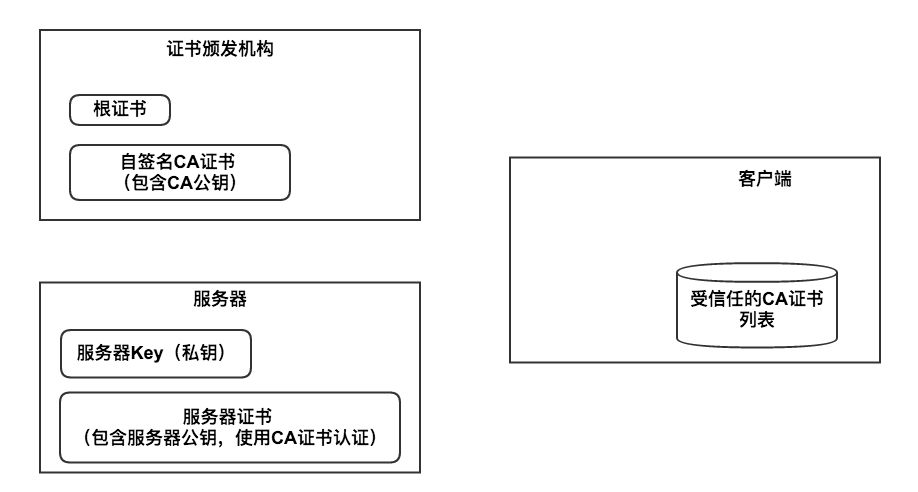
1. 创建公钥、私钥及证书
- 创建私钥
openssl genrsa -out privatekey.pem 1024
- 创建证书签名请求
openssl req -new -key privatekey.pem -out certrequest.csr
- 获取证书,线上证书需要经过证书授证中心签名的文件;下面只创建一个学习使用证书
openssl x509 -req -in certrequest.csr -signkey privatekey.pem -out certificate.pem
- 创建pfx文件
openssl pkcs12 -export -in certificate.pem -inkey privatekey.pem -out certificate.pfx
2. http.server
- 创建服务器
import https from 'https';
import fs from 'fs';
const options = {
key: fs.readFileSync('dist/privatekey.pem'), // 私钥
cert: fs.readFileSync('dist/certificate.pem') // 公钥
};
https.createServer(options, (req, res) => {
res.end();
}).listen(8000);
三、 HTTP2
1. 优势
(1)多路复用 - 雪碧图、多域名CDN、接口合并
这是一个HTTP2的演示地址,分别用HTTP/1.1和HTTP/2请求379张图片,对比出HTTP/2在速度上的优势
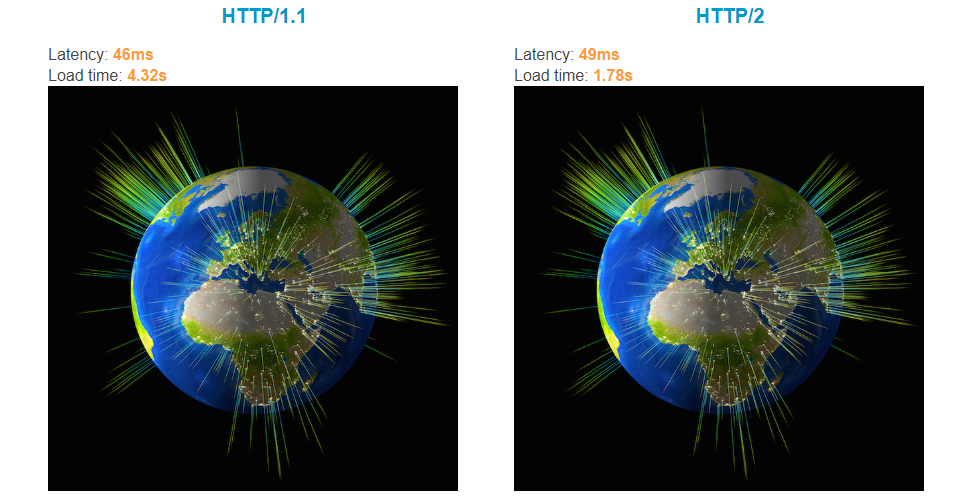 打开控制台查看网络请求,我们可以发现HTTP/2和HTTP/1.1的明显区别
打开控制台查看网络请求,我们可以发现HTTP/2和HTTP/1.1的明显区别
HTTP/1.1:
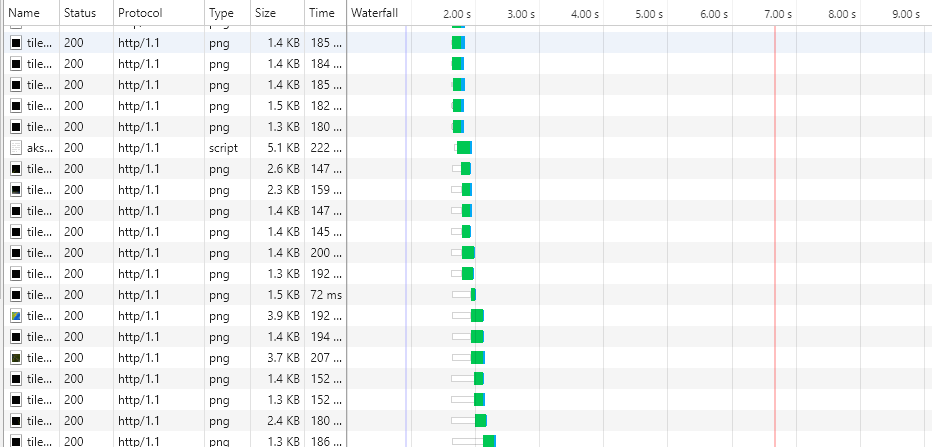
HTTP/2:
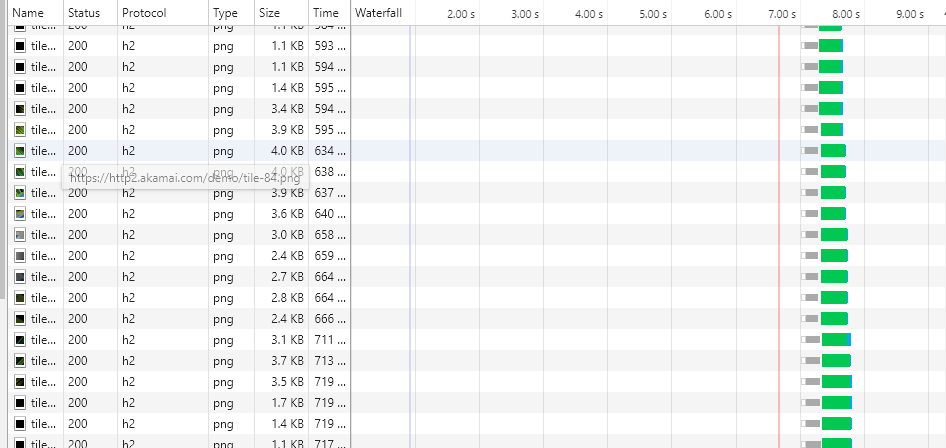
由上图可以看出,多路复用允许同时通过单一的 HTTP/2 连接发起多重的请求-响应消息;而HTTP/1.1协议中,浏览器客户端在同一时间,针对同一域名下的请求有一定数量限制。超过限制数目的请求会被阻塞

首部压缩
- http/1.x 的 header 由于 cookie 和 user agent很容易膨胀,而且每次都要重复发送。http/2使用 encoder 来减少需要传输的 header 大小,通讯双方各自 cache一份 header fields 表,既避免了重复 header 的传输,又减小了需要传输的大小。高效的压缩算法可以很大的压缩 header,减少发送包的数量从而降低延迟
服务端推送
- 服务端推送是一种在客户端请求之前发送数据的机制。在 HTTP/2 中,服务器可以对客户端的一个请求发送多个响应。举个例子,如果一个请求请求的是index.html,服务器很可能会同时响应index.html、logo.jpg 以及 css 和 js 文件,因为它知道客户端会用到这些东西。这相当于在一个 HTML 文档内集合了所有的资源。
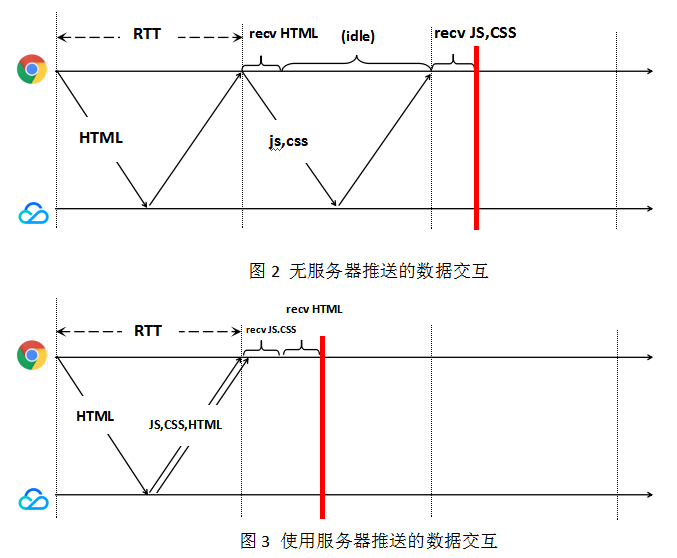
2. nodeJS http/2 实践
- 搭建http/2 服务器
import http2 from 'http2';
import fs from 'fs';
const options = {
key: fs.readFileSync('dist/privatekey.pem'), // 私钥
cert: fs.readFileSync('dist/certificate.pem') // 公钥
};
http2.createSecureServer(options, (req, res) => {
res.end();
}).listen(8078);
- 验证 http/2 多路复用
import http2 from 'http2';
import fs from 'fs';
import URL from 'url';
import mime from 'mime';
const {HTTP2_HEADER_PATH} = http2.constants;// :path
const options = {
key: fs.readFileSync('dist/privatekey.pem'), // 私钥
cert: fs.readFileSync('dist/certificate.pem') // 公钥
};
http2.createSecureServer(options, (req, res) => {
const url = URL.parse(req.url, true);
if (url.pathname != "/" && url.pathname != "/favicon.ico") {
const indexObj = getFdAndHeader(url.pathname);
res.stream.respondWithFD(indexObj.fd, indexObj.headers);
} else {
const indexObj = getFdAndHeader('more.html');
res.stream.respondWithFD(indexObj.fd, indexObj.headers);
}
}).listen(8078);
const getFdAndHeader = (fileName) => {
const filePath = "public/" + fileName;
const fd = fs.openSync(filePath, 'r');
const stat = fs.fstatSync(fd);
const headers = {
'content-length': stat.size,
'last-modified': stat.mtime.toUTCString(),
'content-type': mime.lookup(filePath)
};
return {fd, headers};
};
效果:
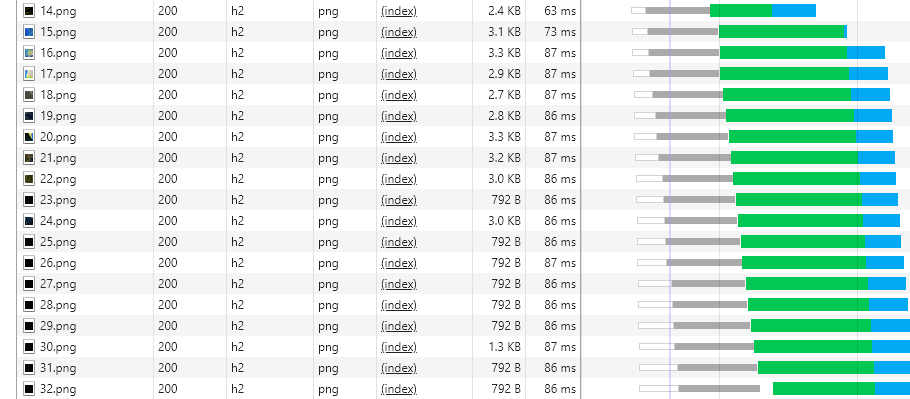
- 实现 http/2 服务端推送
import http2 from 'http2';
import fs from 'fs';
import mime from 'mime';
const {HTTP2_HEADER_PATH} = http2.constants;// :path
const options = {
key: fs.readFileSync('dist/privatekey.pem'), // 私钥
cert: fs.readFileSync('dist/certificate.pem') // 公钥
};
http2.createSecureServer(options, (req, res) => {
const indexObj = getFdAndHeader('index.html');
const jsObj = getFdAndHeader('someJs.js');
const cssObj = getFdAndHeader('someCss.css');
push(res.stream, jsObj);
push(res.stream, cssObj);
res.stream.respondWithFD(indexObj.fd, indexObj.headers);
}).listen(8078);
function push(stream, obj) {
stream.pushStream({[HTTP2_HEADER_PATH]: obj.urlPath}, (pushStream) => {
pushStream.respondWithFD(obj.fd, obj.headers)
})
}
const getFdAndHeader = (fileName) => {
const filePath = "public/" + fileName;
const fd = fs.openSync(filePath, 'r');
const stat = fs.fstatSync(fd);
const urlPath = "/" + fileName;
const headers = {
'content-length': stat.size,
'last-modified': stat.mtime.toUTCString(),
'content-type': mime.lookup(filePath)
};
return {fd, headers, urlPath};
};
推送效果:
 无推送效果:
无推送效果:
